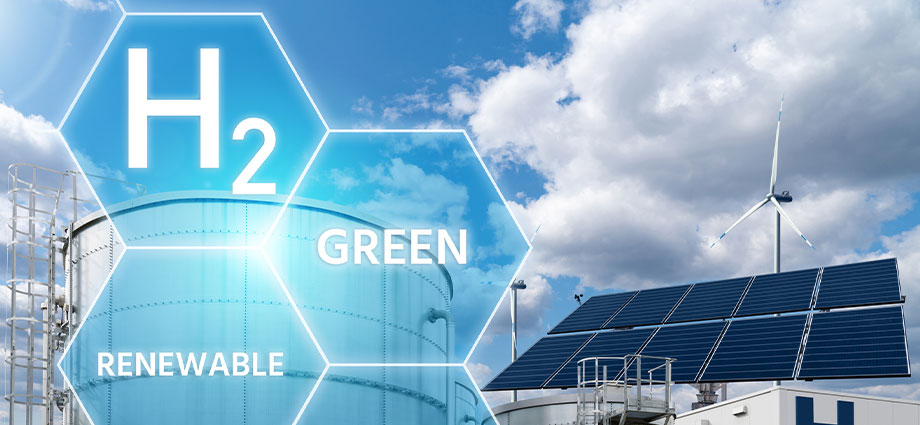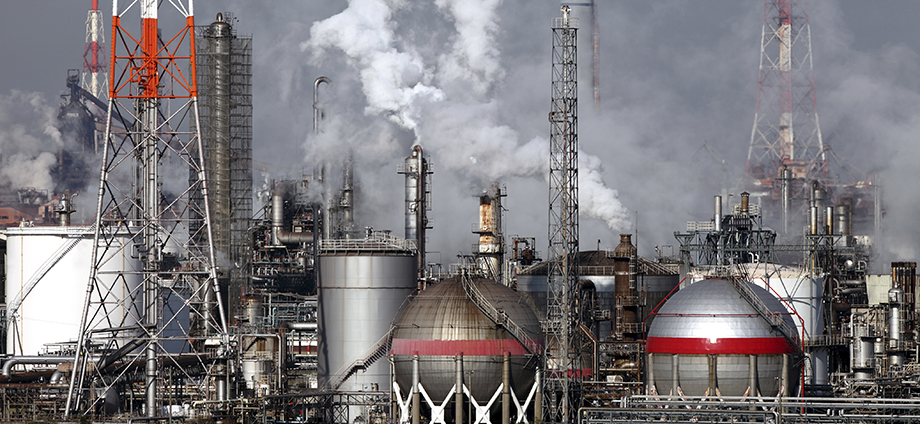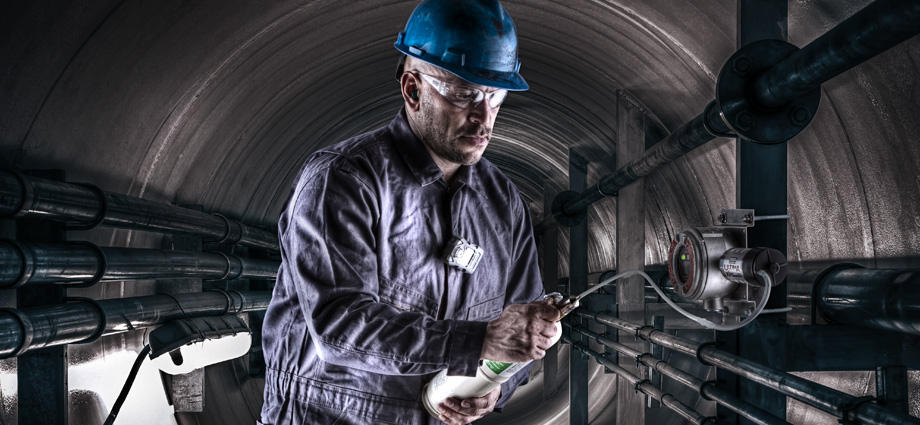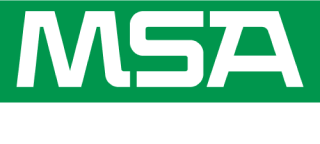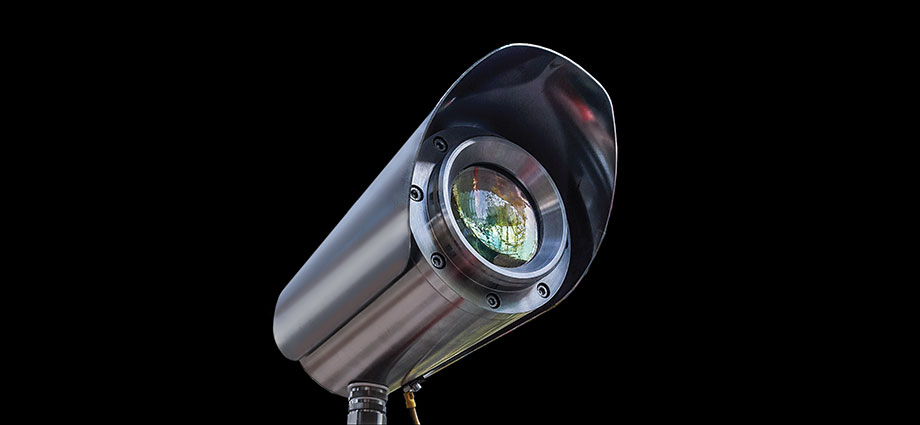
Widely available and transportable, ethylene gas (C2H4) is becoming a preferred resource around the world. Its versatility makes it suitable for a variety of applications ranging from power generation to plastics manufacturing.
In fact, ethylene is so widely used that it’s been dubbed one of the world’s most important chemicals with approximately 200 million tons produced each year.1,2 In the United States, 95% of ethylene gas is produced in the Gulf Coast.3
But where is all this ethylene gas safely kept until it’s needed? Most is stored in underground caverns as a pressurized liquid.
There are, however, some things to know about safe underground storage, including how to monitor underground storage caverns for potential gas leaks.
How does underground ethylene storage work?
Perhaps the best and easiest way to explain underground ethylene gas storage is through a real-world case study.
Here’s how underground ethylene storage looks from the vantage point of one of our customers: a major pipeline company in the Gulf Coast who built ethylene leaching caverns to store and transport locally produced ethylene.
- The customer created a series of underground storage caverns by leaching out deep, thick layers of rock salt. (According to the U.S. Department of Transportation, salt domes are ideal for this application due to their dry, geologically stable nature.4)
- To create the caverns, they injected water to dissolve the salt, extracting the resulting brine to make room for the ethylene to be stored.
- Then, they filled the cavern with the ethylene, where it stays until it’s needed.
- To extract the ethylene, the customer pumps the reusable brine back into the cavern to force the ethylene. This works well because the brine and ethylene are of different compositions, so they don’t mix.
- Above the cavern sits other necessary equipment used in processing, including injection pumps, dehydrators, Coriolis meters, scrubbers, and meter runs.
Why is monitoring for gas leaks so important?
Storing ethylene in underground caverns is ideal because these caverns can hold very large quantities of the substance. The challenge with underground storage, however, is that it needs to be monitored for ethylene and ethane gas leaks – and not just from underground within the caverns, but also from all of the above-ground equipment.
Although both ethylene and ethane are on the U.S. government’s list of hazardous materials,5 there are reliable gas detection technologies that can make the job safer and easier.
In the case of our Gulf Coast customer, the MSA solution includes multiple layers of technologies using these MSA products:
- Senscient ELDS™ Open Path Gas Detector: Specifically detects ethylene gas leaks along the pipeline
- ULTIMA® X5000 XIR Plus Point Gas Detector: Detects gas leaks at the ethane injection pump
- Observer® i Ultrasonic Gas Leak Detector: Listens for high-pressure gas leaks
Gas Detection Technologies: Laser vs. Infrared
Now you may be wondering why a laser technology was chosen as part of the solution. That’s because lasers have some distinct advantages over traditional non-dispersive infrared (NDIR) technologies, including:
- Not affected by cross interferent gases
- More uptime in adverse weather conditions
- Higher detection sensitivity
- Requires no maintenance or consumable parts
However, in the case of our Gulf Coast customer, there’s one advantage that’s even more important:
The ELDS laser is gas-specific to ethylene.
MSA’s Senscient ELDS employs Tunable Diode Lasers within its range of open path gas detectors. Featuring four unique harmonics, the laser measures the amplitude of the harmonics to give specificity without absorbing any water vapor.
ELDS (enhanced laser diode spectroscopy) instruments are best suited for gas monitoring along a property fence line, boundary, or in linear rows of equipment such as pumps, valves, and storage tanks.
In brief, here’s how ELDS gas detectors work:
- ELDS is an open-path, non-contact method of detecting specific toxic or flammable gases
- When a gas cloud of interest intersects the ELDS transmitter’s laser beam, the ELDS receiver module measures the wavelengths of light absorbed
- It then performs a Fourier-transform spectroscopic analysis to identify concentration of the target gas
Using ‘Layers of Protection’ to Enhance Safety
As we’ve said, when it comes to underground ethylene storage, the risk of combustible or toxic gas release is a definite and significant hazard. The potential for serious propagation of fire or explosion increases when flammable liquid or gas storage tank farms, pipeline compressors, or fuel transfer loading terminals are located nearby.
The impact of such an event could result in tragic loss of life, injury, damage to equipment and operations, as well as have adverse effects on surrounding communities and the environment. Which is why we recommend a layered approach to fixed gas and flame detection (FGFD).
The layered approach to safety factors in the unique characteristics of the facility; namely tightly placed equipment, piping, and tanks, as well as any outdoor equipment that may be exposed to inclement weather and temperature extremes.
It also accounts for the fact that no single gas or flame sensing technology can work for every application or location. The layered approach not only enhances worker and facility safety, it also helps improve overall availability.
The Layered Approach in the Real World
MSA’s Senscient ELDS™ lasers were installed on our Gulf Coast customer’s ethylene injection pumps, as well as on their ethylene metering runs for a total of five systems.
Because their pumps and metering runs are relatively short, the ethylene lasers are 5 to 40 meters with a 0-1 LEL.m range.
We also installed two Observer-i ultrasonic gas leak detectors around the other ethane pumps, and twelve Ultima X5000 XIR Plus point detectors around the dehydrators, scrubbers, and any remaining injection pumps.
Results
By combining next-generation point, zone, and perimeter hazard sensing technologies with proper notification, control, mitigation, and communications systems, we provided our customer with layers of sophisticated, effective protection designed to significantly reduce the possibility of accidental gas leaks and fire ignition events.
To learn more about our advanced gas detection technologies or to schedule a demo, contact us today.
Sources:
[1] org. “Ethylene: The ‘World’s Most Important Chemical.” Accessed 27 July 2022, https://www.afpm.org/newsroom/blog/ethylene-worlds-most-important-chemical.
[2] South Carolina College of Engineering and Computing. “Producing ethylene through a more environmentally safe process.” Accessed 27 July 2022, https://sc.edu/study/colleges_schools/engineering_and_computing/news_events/news/2021/producing_ethylene_environmentally_safe_process.php.
[3] gov. “U.S. Department of Energy Ethane Storage and Distribution Hub in the United States.” Accessed 27 July 2022, https://www.energy.gov/sites/prod/files/2018/12/f58/Nov%202018%20DOE%20Ethane%20Hub%20Report.pdf.
[4] S. Department of Transportation. “Fact Sheet: Underground Storage Caverns.” Accessed 27 July 2022, https://primis.phmsa.dot.gov/comm/factsheets/fsundergroundstorage.htm.
[5] National Archives. “Code of Federal Regulations, 49 CFR 172.101 Hazardous Materials Table.” Accessed 27 July 2022, https://www.ecfr.gov/current/title-49/subtitle-B/chapter-I/subchapter-C/part-172/subpart-B/section-172.101.


